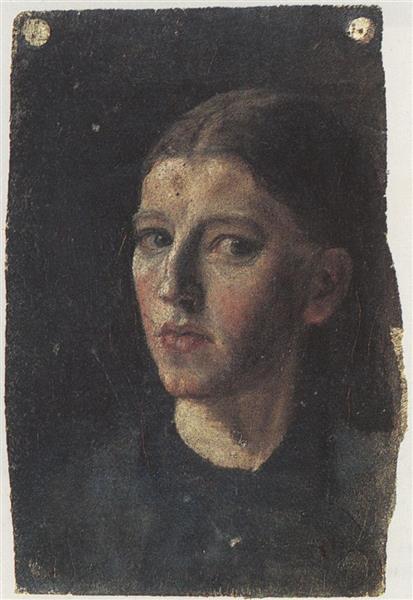Description
The "Self -portrait" work of Anna Ancher, carried out in 1878, is erected as a key piece to understand not only the evolution of its creator's style, but also the cultural and artistic context of the late nineteenth century. Anna Anchor, an outstanding member of the Skagen movement, becomes a unique voice within the Danish artistic landscape, transcending the limitations of her time and affirming her identity as a woman artist in an area traditionally dominated by men.
In this painting, Ancher represents herself in an intimate environment, using a palette of soft and natural colors that refer to the light of northern Europe. The portrait reflects a remarkably personal atmosphere, where the warm shades of their clothing contrast with the darkest background, suggesting a state of introspection and serenity. The choice of colors, which includes nuances of blue and earth, combines a sense of calm that resonates with the search for an emotional and psychological connection in the self -representative act. This use of color not only highlights the figure of the artist, but also speaks of her deep understanding of light and her effect on composition.
The figure of Anna Anchor, who looks directly at the viewer, emanates a quiet force. His face, gently illuminated, captures attention and suggests a vulnerability contained, where the artist challenges the conventions of idealized beauty by including traits that reflect his humanity. The artist's gaze can be interpreted as an open dialogue with the viewer, inviting him to enter his inner world and reflect on the role of women in the society of his time.
At the compositional level, the self -portrait is not constrained to a simple representation of the figure. Ancher uses a complex interrelation between the frontal plane and the background, which generates a sense of depth and dimension. The elements of its environment, although subtle, contribute to the narrative context of the work, integrating personal identity with the artistic traditions of its time.
In addition, it is essential to frame this painting within the broader style of Skagen's movement, which Anchar was a central figure. The group of artists who met in this Danish town shared an interest in light and nature, and their work is usually characterized by a sensitivity towards the rural environment and its people. However, the uniqueness of Ancher's self -portrait lies in his ability to combine self -exploration with an atmosphere of collective, marking an important distance from other portraits of his time that tended to idealize or symbolize the represented figure.
In summary, the "self -portrait" of Anna Ancher is not only a testimony of her technical and aesthetic ability, but a deep reflection on the identity, light and perception of women in an artistic context. When rescuing the essence of his own person, Anchar leaves an indelible mark on art history, inviting future generations to explore and reconsider the multiple dimensions of female representation. His work is ultimately, a call to introspection and the search for authenticity in the creative process, a legacy that continues to resonate strongly.
KUADROS ©, a famous paint on your wall.
Hand-made oil painting reproductions, with the quality of professional artists and the distinctive seal of KUADROS ©.
Art reproduction service with satisfaction guarantee. If you are not completely satisfied with the replica of your painting, we refund your money 100%.

